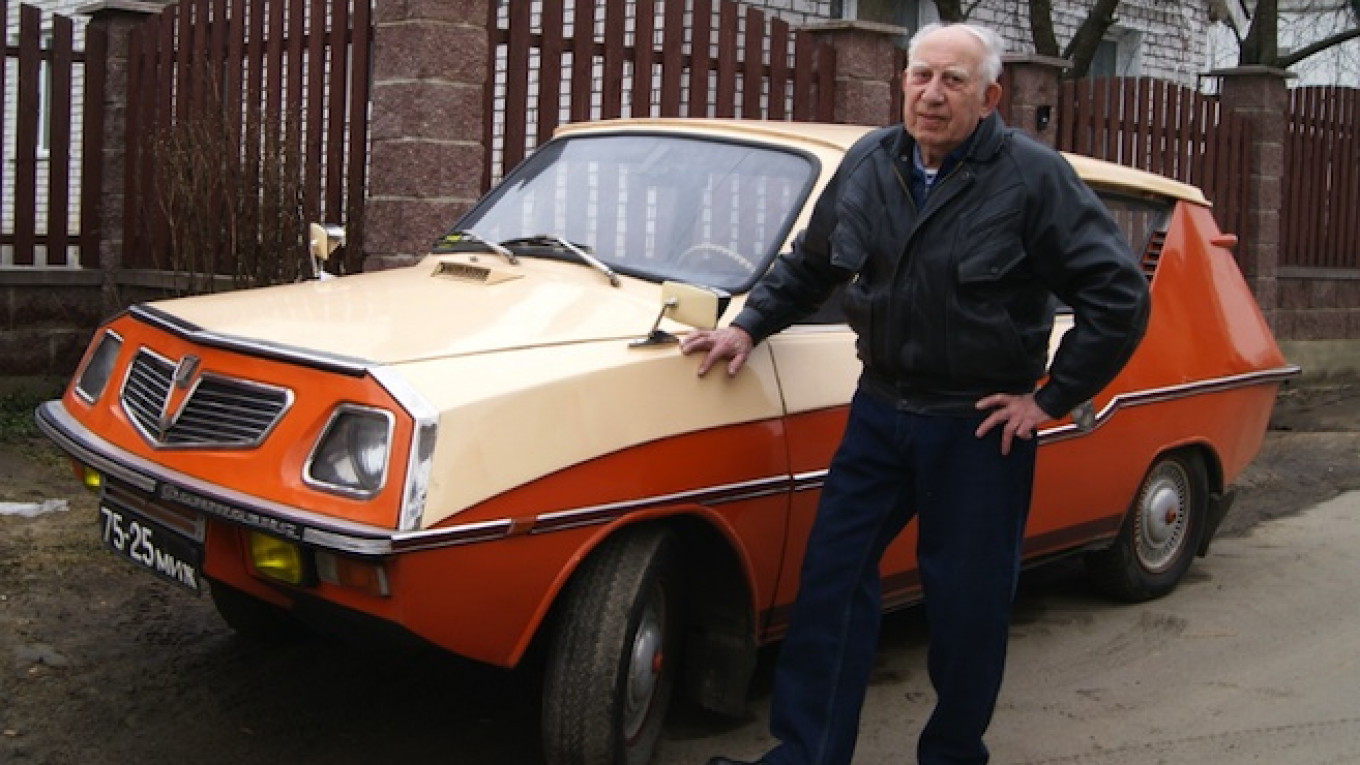This article was originally published by The Guardian New East Network
It wasn't easy to buy a car in the Soviet Union. Usually, the first thing to do was to sign up on a decade-long waiting list to register your interest in owning a vehicle. Secondly, you needed to save what was then a huge sum of money; a new Zaphorozhets cost the equivalent of about 30 times the average monthly salary.
A few people found a different way, however — assembling cars with their own hands. One such person is Boris Karavkin, an artist from Minsk, who spent five years making one in his spare time. Now retired, Karavkin has been driving his 'Fantasy' for more than 40 years and is preparing the car for an upgrade.
Karavkin says he gained the necessary technical skills to make his car while working at a weapons factory, and took inspiration for the design from popular science magazines. One of the main problems at those times was a lack of car parts on sale; a problem that affected many goods during the Soviet era.
To solve this, the artist drew posters and billboard signs for a car garage for four years in exchange for the necessary parts. Finally in 1973, when the car was ready, another obstacle popped up: an obligatory police registration of a "handmade" vehicle. As Karavkin says, it only became possible by "some miracle" — laws set such strict standards that self-assembly cars would not usually meet them.
When assembling the car, Karavkin used sliding doors, a swivel chair for the driver's seat and anti-theft nuts for hubcaps (the latter have always been popular with car thieves, the world over).
In 40 years, parts of the car have been replaced several times: the engine has been changed three times, the suspension and the air intake system were improved. But the 'Fantasy' has now travelled 300,000 km, and Karavkin says it has a maximum speed of 140 km/h.
Every year the car undergoes a mandatory inspection, like an MOT. This winter, Karavkin has been trying not to drive the car to avoid corrosion — the chassis doesn't have much resistance to new chemicals used in de-icers.
Though some foreign collectors are ready to pay up to €10,000 for the unusual car, Karavkin says he is not ready to sell "a part of his life".
A TUT.BY correspondent took a ride in the unique car, and asked what advice its creator would give to people keen on assembling their own car today. "I came up with this idea because I was longing to have a car. I could not just buy it in a shop so I had to spend five years of my life to assemble it by myself," he said.
"Therefore, my advice for the do-it-yourselfers who might want to "reinvent the wheel" as I did would be not to waste so much time on this venture. Buy a car from a dealer, now it is not a problem anymore."
A version of this article first appeared on TUT.BY. It was translated by Yuliana Kornyushko.
Watch the video here:
A Message from The Moscow Times:
Dear readers,
We are facing unprecedented challenges. Russia's Prosecutor General's Office has designated The Moscow Times as an "undesirable" organization, criminalizing our work and putting our staff at risk of prosecution. This follows our earlier unjust labeling as a "foreign agent."
These actions are direct attempts to silence independent journalism in Russia. The authorities claim our work "discredits the decisions of the Russian leadership." We see things differently: we strive to provide accurate, unbiased reporting on Russia.
We, the journalists of The Moscow Times, refuse to be silenced. But to continue our work, we need your help.
Your support, no matter how small, makes a world of difference. If you can, please support us monthly starting from just $2. It's quick to set up, and every contribution makes a significant impact.
By supporting The Moscow Times, you're defending open, independent journalism in the face of repression. Thank you for standing with us.
Remind me later.


